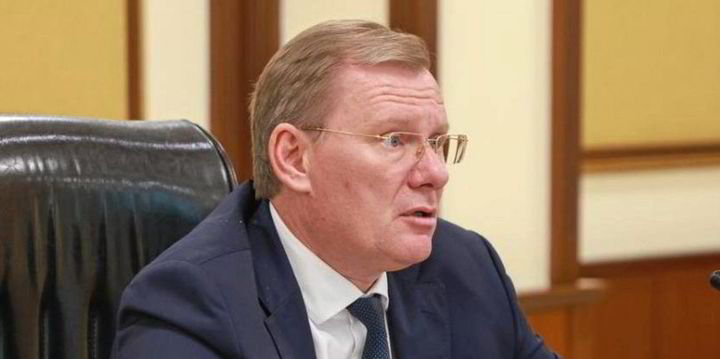Caspian Pipeline Consortium expects to continue as the leading exporter of Kazakhstan crude, despite Kazakh President Kassym-Jomart Tokayev urging the nation’s producers to look for alternative routes that avoid crossing Russian territory.
The consortium operates a 1500-kilometre pipeline from the western Kazakh oil province of Atyrau to a marine terminal near the Russian port of Novorossiysk on the Black Sea. When fully operational, the terminal handles about 80% of Kazakhstan’s total oil exports and is capable of supplying more than 1% of global oil consumption.
It also acts as the major export route for Kazakhstan’s three giant foreign-led oil developments — Tengiz, Kashagan and Karachaganak — which allowed it to gain an exemption from Western sanctions imposed on Russia following the invasion of Ukraine in 2022.
Kazakhstan and Russia retain close relations, with Tokayev and Russian President Vladimir Putin meeting frequently last year to discuss mutual co-operation, with energy deals at the top of the agenda and Kazakhstan expanding its role as a transit country for Russian natural gas flows to Central Asia and China.
However, following the international sanctions imposed on Russia after the invasion of Ukraine, Kazakh government officials also started urging the country’s oil producers to consider alternative export routes, including reviving the shipments across the Caspian Sea to Azerbaijan that were commonplace before the Caspian pipeline became operational.
Article continues below the advert
Caspian Pipeline Consortium’s deputy executive director Kairgeldy Kabyldin this week said that Kazakhstan “has no other alternative route” to the pipeline.
And executive director Nikolay Gorban stressed that, despite suggestions from the media and analysts, the pipeline’s operations have never been interrupted because “of political reasons”.
The outlook for the country’s largest oil development, Tengiz, led by US supermajor Chevron, was downgraded in 2022 as ratings analysts anticipated Russian authorities would restrict transit flows of crude from Kazakhstan’s Western-led developments in retaliation against international sanctions.
However, in 2023, the project’s operator achieved another Kazakh crude export record, exporting almost 1.2 million barrels per day of oil from the country, Caspian Pipeline said earlier.
Meanwhile, Gorban added that the Caspian pipeline has increased its capacity available to Kazakhstan to about 1.5 million bpd, through a major debottlenecking programme that started in 2019.
That extra capacity covers the transport needs for planned production increases at Tengiz and Kashagan, according to Gorban.
Despite general inflation pressures in Kazakhstan and Russia, Caspian Pipeline has had no talks with shareholders about increasing transportation tariffs, Gorban said, with the tariffs remaining unchanged since the pipeline started operations in 2001.
Gorban added that the operator is looking to expand its system storage capacity by installing additional storage tanks at key pumping stations.
The current storage capacity is about 11.4 million barrels, enabling Caspian Pipeline to accept oil from suppliers without any intake restrictions for 80 hours if the operator has to suspend tanker loadings at its marine terminal because of storms in the Black Sea.
However, adding more storage capacity will enable the company to carry out its two annual maintenance programmes without halting the intake of oil to the system, Gorban said.
Problem solving
He also said a group of the consortium’s private shareholders, led by Chevron, has assisted efforts to secure imports of critically important Western-manufactured equipment from suppliers that had reduced their exposure to Russia because of the sanctions.
While Caspian Pipeline has been explicitly excluded from sanctions imposed against Russia, international suppliers “have been wary” of supplying the operator with equipment, Gorban acknowledged.
Caspian Pipeline is now working to push through an overdue major upgrade at the marine terminal, where it has to replace two offshore tanker loading buoys — single point mooring (SPM) buoys — that have been in operation since the pipeline started operations.
Gorban said the operator expects to sign a binding contract for the SPM work before May this year, aiming to take delivery of new replacement SPMs before the end of 2025 and carrying out installation in 2026.
Another ongoing Caspian Pipeline programme is the replacement of about 400 kilometres of line pipe that is approaching the end of its service life, Gorban said.
The operator is also set to secure redundancy power supply lines to its two key pumping stations in Kazakhstan to avoid possible interruptions to operations as a result of wide-ranging blackouts such as those experienced throughout the country last year.

